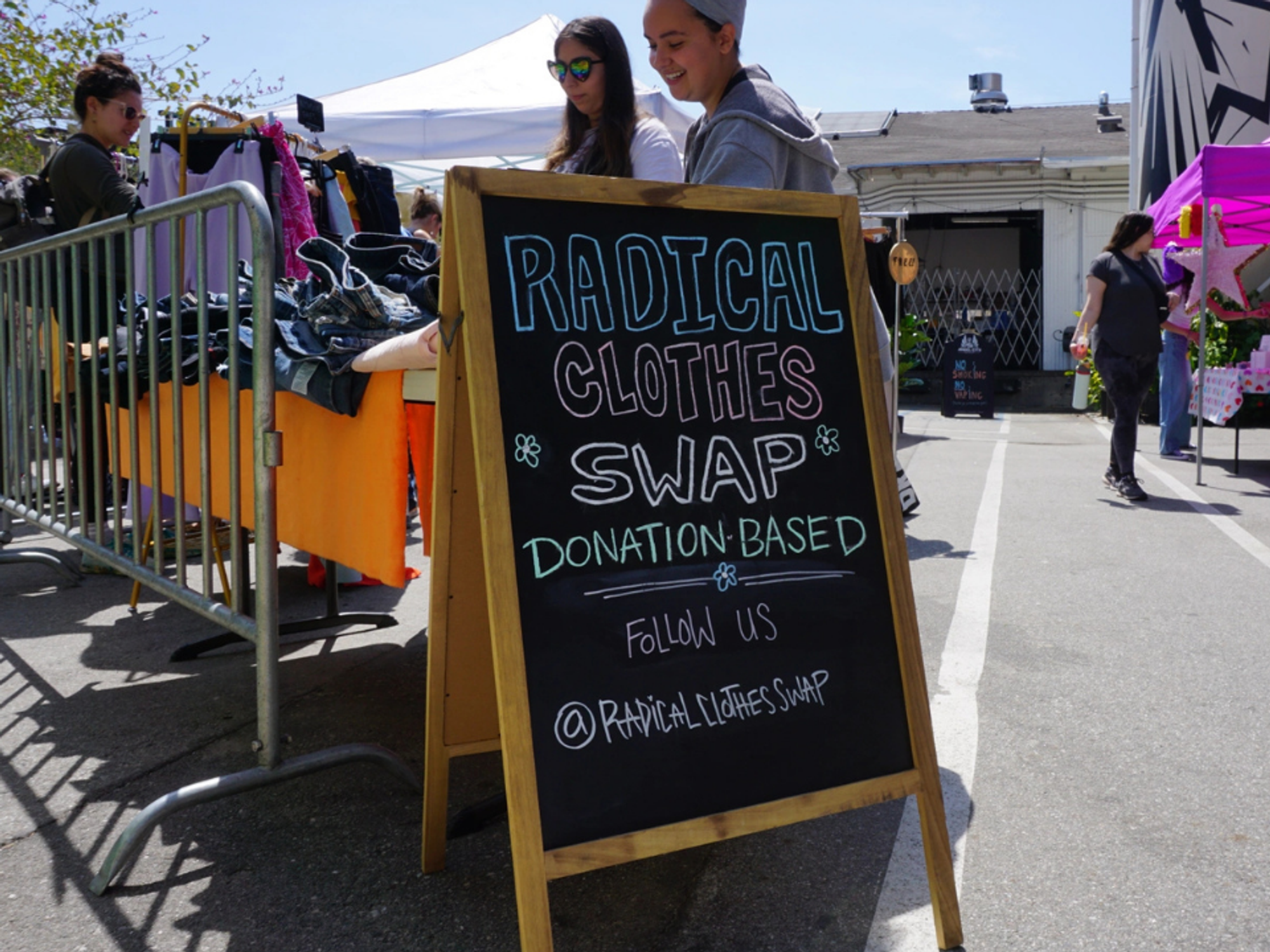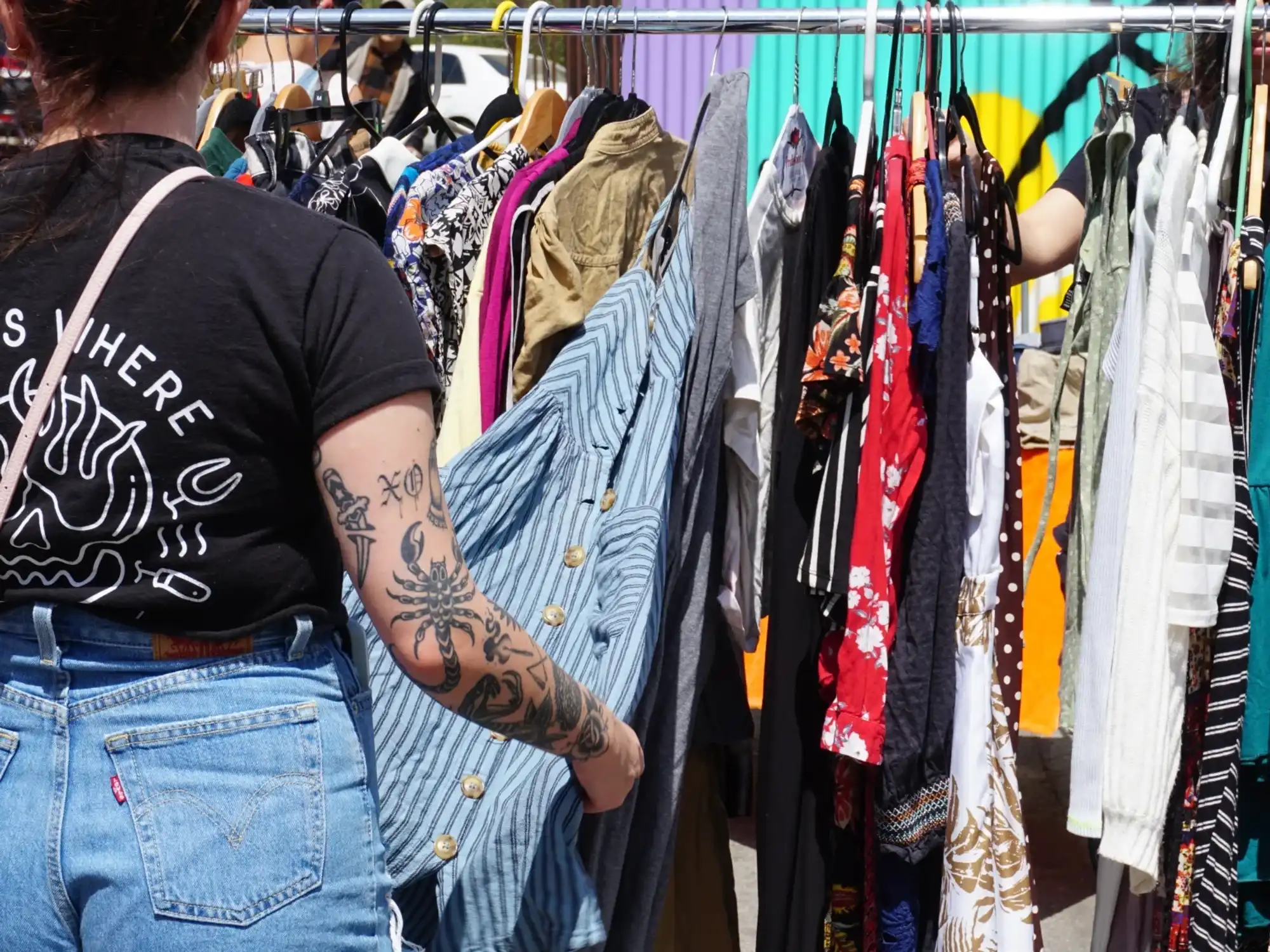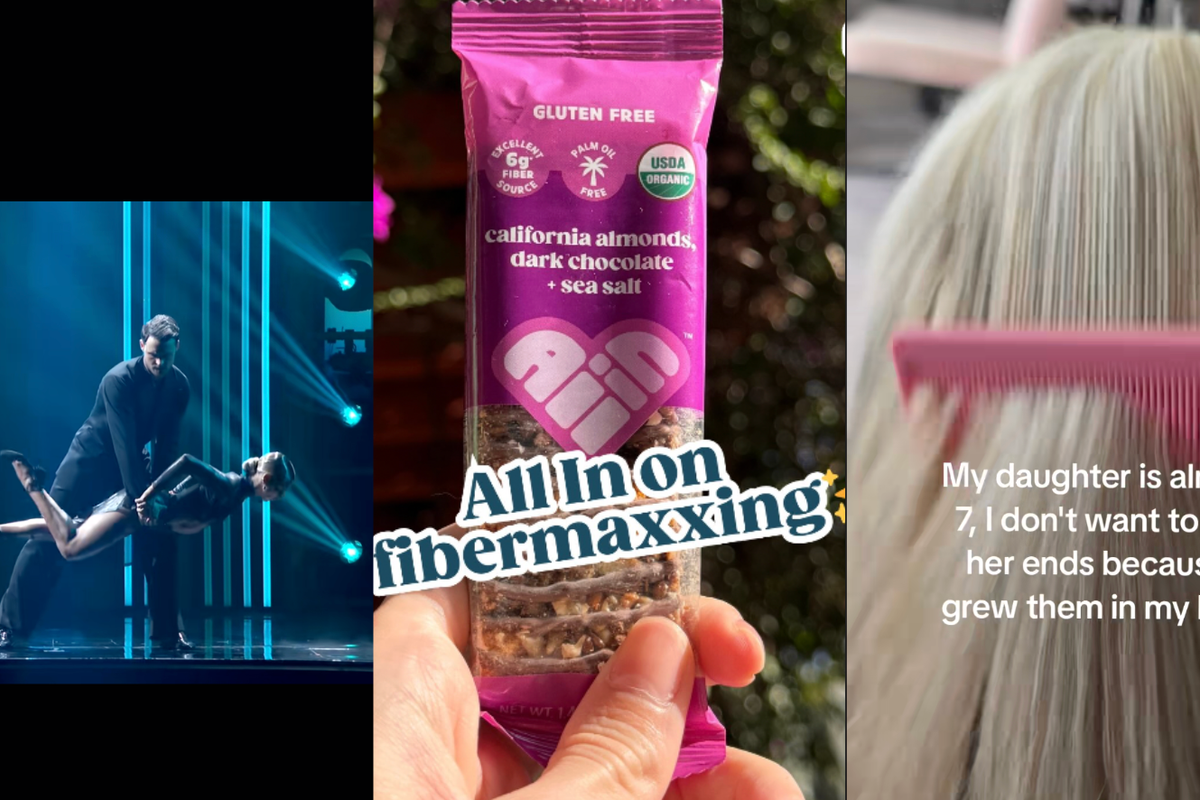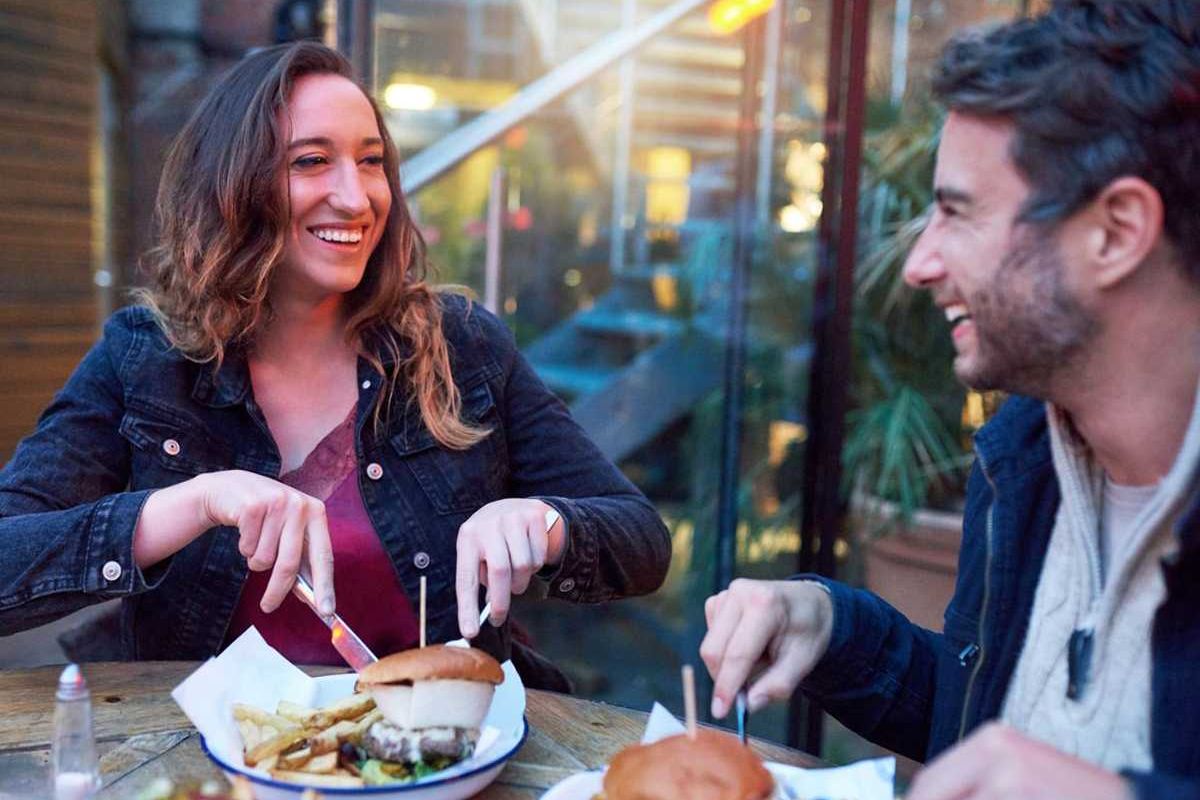"There's no catch": Latina activists are giving away thousands of free clothes in LA
Radical Clothes Swap is "a bad-ass group of stylish WOC who’ve made clothing swaps cool."

Radical Clothes Swaps are changing the way we think about fashion.
The clothing world has changed drastically over the past 100 years, as we've witnessed the rise of fast fashion, with companies like Shein, Zara, H&M, and Fashion Nova now dominating the marketplace. As a result, it is estimated that the average American tosses 81.5 pounds of clothes away each year, contributing to the growing global textile waste crisis. However, in Los Angeles, a bad-ass team of Latina activists are putting their community activist roots to good use, combating fast fashion’s pro-waste ethos with a simple mission: free clothes for all.
Founded in 2021, Radical Clothes Swap (RCS) goes beyond thrift stores or apps like Depop, where users can sell second-hand clothing. It’s a revolutionary movement that asks us to challenge our assumptions about waste, consumption, and community care—and makes sure we look good while doing it. “In a capitalistic world, what’s the most radical thing you can do? Give resources away for free while helping the environment? Say no more,” declares Nicole Macias, co-founder and CEO of Radical Clothes Swap.

Radical Clothes Swap is a woman of color-owned, donation-based clothing swap that hosts monthly events throughout Los Angeles. It’s a refreshingly straightforward concept: people can donate up to 10 gently used items of clothing (with the exception of shoes and bags) and anyone, whether they’ve donated or not, can take home as many pieces of clothing as they want. See a shirt that your partner would look great in? Grab it, no questions asked. These clothes are for all, no exceptions.
“What we’ve created is beautiful because when it comes to Black and Brown folks, we’re not used to being given anything for free. People will often give us confused looks when we tell them the clothes are free. They expect there to be a catch, but there is no catch at all.” - Janninne Mancilla to Refinery29
Nicole Macias, a community organizer based in Northeast LA, met her RCS co-founder, Janninne Mancilla (the company’s social media and Marketing Manager) on Instagram, where the two connected over a “shared love of fashion and community” and decided to join forces. The rest of the team formed naturally, with Enri Navarro (RCS' Graphic Designer and Swap Manager) and Nikki Hernandez (Website Manager and Consultant), who were both already community advocates and friends of the co-founders.
@radicalclothesswap Our free monthly Sip & Swap is back at Angel City Brewery! Grab a miche and get your swap on 💞 every second Saturday of the month. #sustainablehotgirlsummer #radicalclothesswap #raddiebaddies #freeclothesforall #LosAngelesClothesSwap #angelcitybrewery #ilovemicheladas
“We’re a bad-ass group of stylish WOC who’ve made clothing swaps cool,” reads the description on Radical Clothes Swap’s website. “Passionate about making the world a better (and less trashy place), each of us devotes our time and energy for free to this radical sustainable fashion cause, often storing the donated clothes and clothing swap equipment in our homes and car trunks.”
Recycling clothes is a radical act
The fashion industry is notorious for its encouragement of overconsumption, and is one of the world’s largest polluters, contributing 92 million tons of textile waste annually. Let’s visualize that: 92 million tons, or 184 billion pounds of waste. To get rid of that many clothes, the BBC estimates that a full dump truck would have to be emptied into a landfill every second for an entire year. Why so much waste? It’s reported that the average garment is only worn between seven to ten times before it’s thrown away. No, not given away, or sold, or donated. Thrown away.
Earth.org provides further disturbing facts. If no action is taken in the next fifteen years, the apparel industry’s global emissions will increase by 50% by 2030. The fashion industry is also responsible for 20% of global water waste, thanks to dyeing, finishing, and the production of materials like yarn and fiber. Ten percent of the ocean’s microplastic pollution comes from textiles, thanks to cheap materials like nylon and polyester, which shed microfilaments every time they’re washed and dried—then flow directly into the sewers. And if you’ve ever seen Finding Nemo, you know where that leads: our beloved oceans.
Oh, and did you know that returned clothes aren’t commonly resold? Two point six million tons of returned clothes end up in landfills—and that’s just in the United States. Just the act of returning clothes leaves an immense carbon footprint: in 2020, it was estimated that 16 million tons of CO2 emissions were released into the atmosphere because of online returns in America, which is the equivalent of 3.5 million cars driving non-stop for an entire year.

Well, that was a bummer, wasn’t it? Now, for the good news: it doesn’t have to be this way. Radical Clothes Swap has already made major strides towards a more sustainable future. One fashionista’s trash is another one’s treasure, and at RCS events, old garments lovingly gain new owners, extending their lifecycle by untold numbers of years.
“Our entire ethos is all about community and resource sharing,” shared Macias with VoyageLA in 2024. “We’re trying to decrease consumption and play with what you can do with what you have.”
Ready to radicalize your local clothing community? Luckily, the Radical Clothes Swap team has created a simple step-by-step template.
- Start a pile. Go through your closet and select three to five clothing items that have, in your heart, lost their luster. Whether it’s too big, too small, or fits just right but is in a pattern you find abhorrent these days, take this as a sign it’s time to move on. As a courtesy, make sure that each piece of clothing is actually gently used, not torn to shreds (Radical Clothes Swaps are not for worn-down hand-me-downs. If your item is unwearable, consider using a verified recycling outlet, like For Days). On clothing swap day, garments should be in good condition (ex. washed, neatly folded, lint-rolled, etc.)
- Round up your friends. Plan a date and start inviting! Be mindful and try your best to curate an inclusive swap, where all sizes, body types, and genders feel welcomed and are represented.
- Swap! This is the fun part. Make sure the environment is clean and ready to go beforehand, then it’s game time, baby. Blast your favorite tunes or consider serving a few snacks or drinks for an elevated vibe.
- Rinse and repeat. Then, it’s time to do it all over again.
“Sustainable fashion is not a one and done thing. Consistently buying second-hand and swapping your clothes for free can reduce the amount of clothing that ends up in landfills every year,” RCS reminds. “You can do your part (and save money) by hosting clothing swaps in your community. Love your clothes; love the planet!”
NOTE: Radical Clothes Shop is donations-based. To support their mission, consider donating on Venmo (@radicalclothesshop) or gift them a WordPress subscription.




 Beaver on riverbank.
Beaver on riverbank.  Pbs Nature Swimming GIF by Nature on PBS
Pbs Nature Swimming GIF by Nature on PBS  An actual beaver dam on the now-thriving Price River
An actual beaver dam on the now-thriving Price River 
 Hard to imagine Dick Van Dyke being "lazy."
Hard to imagine Dick Van Dyke being "lazy." 
 a piece of paper with a heart drawn on it Photo by
a piece of paper with a heart drawn on it Photo by 

 Dinosaur bones.Photo credit
Dinosaur bones.Photo credit  A jump and juggle.Photo credit
A jump and juggle.Photo credit  The widow.Photo credit
The widow.Photo credit  Overlooking a mountain adventure.Photo credit
Overlooking a mountain adventure.Photo credit  Looks like 6 feet under the covers.Photo credit
Looks like 6 feet under the covers.Photo credit  "Bow chicka bow wow!"
"Bow chicka bow wow!"  Two people sharing a milkshake. Photo credit
Two people sharing a milkshake. Photo credit